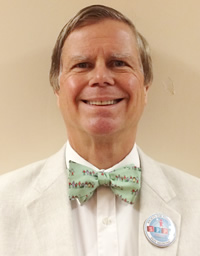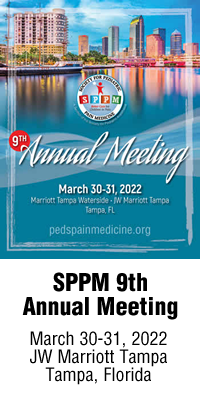President's Message
A Vision for SPPM Inclusivity
By Robert T. Wilder, MD, PhD
Associate Professor of Anesthesiology
Department of Anesthesiology and Perioperative Medicine
Mayo Clinic College of Medicine and Science
Rochester, Minnesota
 |
Dr. Wilder |
As I assume the leadership of the Society for Pediatric Pain Medicine (SPPM), I am humbled by the legacy of its first three presidents. Sabine Kost-Byerly, MD had the vision to create SPPM out of the Pain-SIG (Special Interest Group) of our parent Society for Pediatric Anesthesia. Anjana Kundu, MBBS, MD initiated the Question of the Month, expanded our advocacy efforts, enhanced our presence online and in social media, and established ties with the US Pain Foundation, the largest patient/parent led advocacy group for pain patients in North America. My immediate predecessor, Rita Agarwal, MD, FAAP, led SPPM through some of the most turbulent times in recent world history, advocating tirelessly for children in pain and challenging SPPM to grow in its mission to promote better care for them. Daunting and impressive achievements, indeed.
My vision for SPPM is for it to be an inclusive, welcoming home for all practitioners who care for children in pain. Founded by anesthesiologists, SPPM nonetheless recognizes and celebrates the multi- and interdisciplinary nature of Pain Medicine. Anything less is a disservice to our patients, and to our non-anesthesiologist colleagues.
To this end, I have worked to change the membership structure of SPPM; giving more members equal voting rights and the opportunity to participate in Society governance through the addition of the Active B member category. As chairman of the SPPM Education Committee, I ensured our Annual Meetings included speakers from many of the disciplines that comprise Pediatric Pain Medicine. I have also promoted official liaisons between SPPM and societies representing associated disciplines. I was a founding member of a new SIG on Intensive Inpatient Pain Management, already a multi- and interdisciplinary group.
Despite such progress, much work remains to be done to expand the membership and relevance of SPPM. Most of our members, and virtually all in Society governance, are anesthesiologists. We must engage the spectrum of practitioners who work with us to promote better care for children in pain, and involve them in SPPM.
I ask your help in these efforts to make SPPM the diverse and inclusive Society it should be. Reach out to colleagues within your institution – advanced practice nurses in your pain service and clinic, pediatric pain psychologists, physiatrists, and physical therapists, as well as any physician who is treating acute or chronic pain in children - and invite them to join SPPM.




